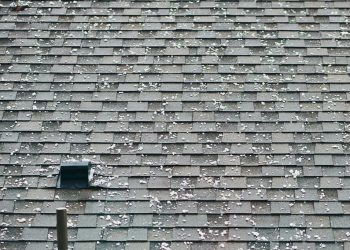Hitting a pothole can result in vehicle damage and expensive repair bills. If a road you commonly drive has a pothole, you might be able to take a different route, but a pothole in your driveway may be impossible to avoid. You should fix it to protect your car, as well as vehicles owned by anyone who may visit you.
What Causes Potholes
Potholes form in asphalt driveways when ice and water from melting snow displace the soil beneath the surface. In dirt and gravel driveways, water can get trapped under the surface and cause potholes. When cars repeatedly drive over weakened areas, the surface becomes damaged and the holes gradually grow wider and deeper.
How Potholes Can Affect Cars
Hitting a pothole can damage the sidewalls and treads of tires or cause them to go flat. A pothole can also damage the wheels, suspension and exhaust system, and it may affect the body of a low-riding car. Depending on the design of the vehicle, the size and depth of the pothole, and the speed and angle at which the car hits it, damage can range from minor to major.
How to Fix a Pothole in Your Driveway
If you have a pothole in an asphalt driveway, you can use an asphalt patch to fill it in. Remove any loose debris, but don’t worry about dirt, dust or water. Pour the patch material into the hole or scoop it with a shovel. After you’ve put about two inches of material into the pothole, push it down to compact it. This is critical to make the repair effective. Continue to add patch material and pack it down until the pothole is filled in. Then, add a little more patch material on top and follow the manufacturer’s instructions on how long to wait before applying sealer.
Since potholes in dirt and gravel driveways are formed by an accumulation of water beneath the surface, you should address that issue first. Add dirt or gravel to the center of the driveway (about one inch of material for every four feet in driveway width). That will make the center of the driveway higher and cause water to run toward the edges of the driveway, keeping it from accumulating again.
If you have a dirt driveway, remove debris from the hole and fill it in according to the above procedure, using dirt instead of patch material. If you have a gravel driveway, follow the same steps and fill in the pothole with gravel. Add enough dirt or gravel so that it rises a few inches above the surface of the driveway. Once this has been completed, carefully drive over the filled-in pothole to compact the material and to make sure the repair was effective. Add more dirt or gravel if necessary.
Address a Pothole Now
A pothole can cause significant damage to vehicles, but it’s something that can be easily fixed. If your driveway has a pothole, spend a little time and money to protect yourself and visitors from expensive repair bills.











